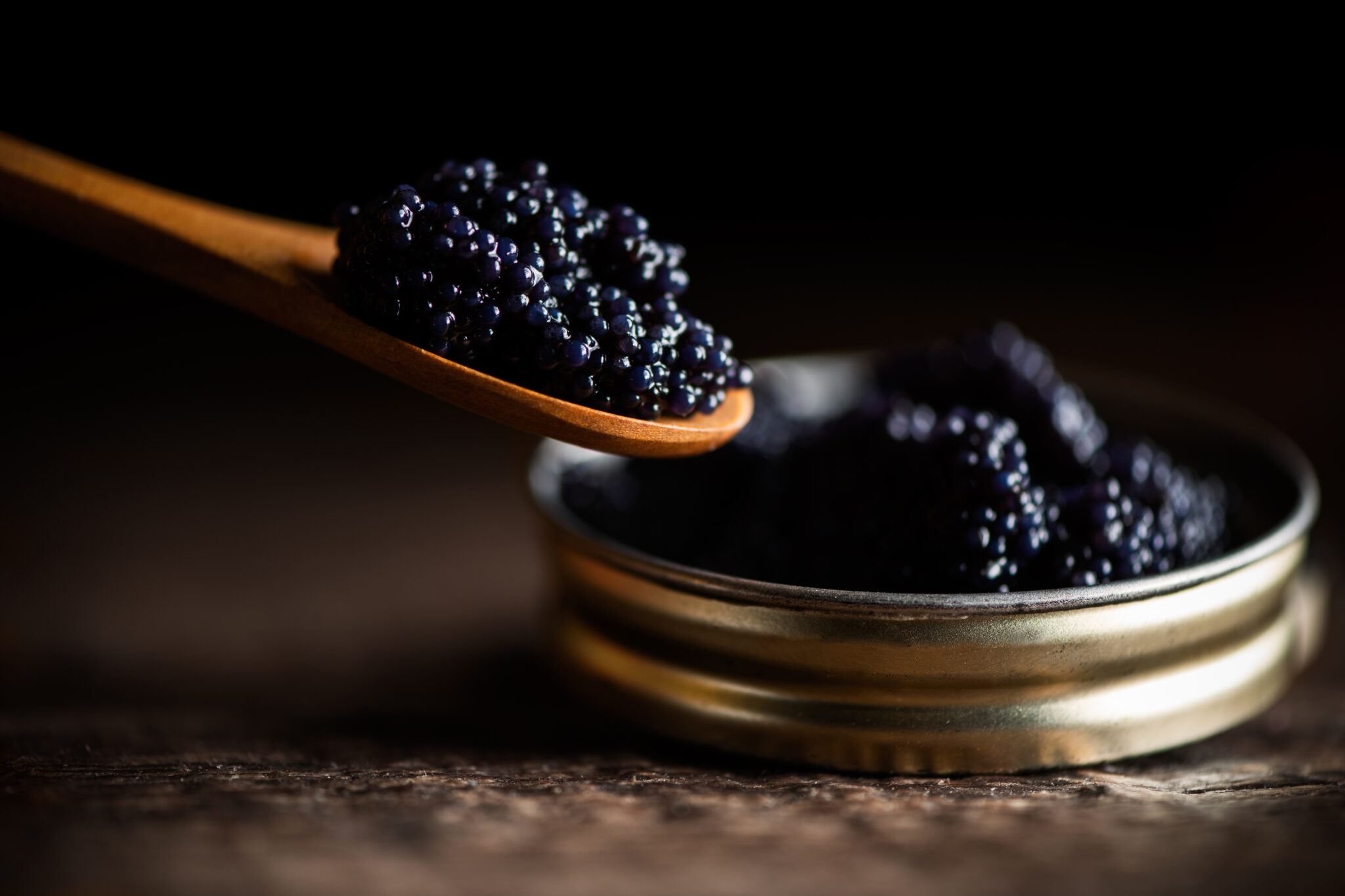Truffles, champagne, and caviar – pure indulgence. Each is unique, expensive, and top luxury lists. Each also sends taste buds into frenzies…

Truffles
Background:
It is believed that ancient Sumerians were the first to discover and eat this delicacy. The white truffle became popular in 14th-century Italy when an appreciation of good food was re-established during the Renaissance.
The reason behind the high costs of this amazing fungus is its scarcity. Truffles are seasonal, extremely difficult to grow, and take many years to cultivate. They require a very specific climate to grow and require lots of oak trees, which is why they’re often found in woodlands. Truffles also have a short shelf life.
The white truffle growing in the woods of Alba, Piedmont, Italy is the rarest and most expensive truffle in the world. This truffle is bigger, more fragrant, and more flavorful than other types, with a hint of nuts and sweet garlic.
Fun Facts:
1). If you’ve ever eaten truffle fries or any other food that makes use of truffle oil, odds are that they don’t contain real truffles. Truffle oil can contain any type of oil, but olive oil is the most common. More neutral and flavorless oils, such as grapeseed and canola, can also be used. Some truffle oils may contain residues of truffles or even pieces of them in the bottle but contain the compounds that are responsible for some of the truffles’ aroma and flavor. These compounds, such as 2,4-dithiapentane, can be manufactured synthetically and be legally called truffle aroma or truffle flavor.
2). For centuries, humans have relied on the keen-smelling sense of pigs and dogs to locate truffles. However, dogs, who are known to be more obedient than pigs and have less of an affinity towards the taste of truffles, have overtaken the role.
3). Many people wrongly believe that you should store a truffle in rice. However, truffles are 80% water so the rice will actually dry out the truffles and ruin the taste. Truffles should be eaten within 4 days and stored in a fridge. The fresher the better.
Most Expensive Ever Sold: 2.86 Pound Croatian Truffle – $330,000
This 2.86 Italian white truffle made waves at an international auction in 2009, when it was dug up in Tuscany by truffle-hunting father-son duo Luciano and Cristiano Savini, along with their dog Rocco. While not the largest truffle to be discovered, at almost 3 pounds, this fungus greatly surpassed the average size that most other truffles are found.

Champagne
Background:
As far back as the 1st century, Romans were cultivating vines and making wine in what was then northern Gaul, now the Champagne region. Over centuries, Champagne evolved from being a pale, pinkish still wine made from Pinot Noir to a sparkling wine. When Hugh Capet was crowned King of France in 987 at the Cathedral of Reims, he started a tradition that brought successive monarchs to the region—with the local wine being on prominent display at the coronation banquets.
Dom Perignon, circa 1693, pioneered many of the important techniques still used in Champagne production today. He first made Champagne out of black grape varieties and created the traditional second fermentation process, or méthode champenoise. Perignon also first used corks with hemp, to stop the wine bottles from exploding. The muselet wire cage was later added by French inventor, Adolphe Jacquesson, to seal the bottles more securely.
By the early 18th century, the Duke of Orléans had made it the drink of choice amongst the French elite. With its growing popularity, new Champagne houses were established to meet the demand for fine sparkling wine. Ruinart was first to open its cellar doors in 1729, with Taittinger (formerly Forrest Fourneaux) following in 1734. Moet opened soon after in 1743, then Lanson (formerly Delemotte) in 1760, Louis Roederer (formerly Dubois Père & Fils) in 1770, Veuve Clicquot in 1772, and Heidsieck in 1785.
Since the days of the early Champagne houses, the appeal of Champagne has continued to grow. Its association with royalty and high society continues to this day, and Champagne is still a drink synonymous with luxury, opulence and celebration.
Fun Facts:
1). Legend has it that back in 1693 upon first tasting the (technically) spoiled sparkling wine Dom Perignon exclaimed “Come quickly, I am tasting the stars!” and made it his mission to find a way to bottle the fine fizzy wine. Although romantic, it’s not true. It’s believed to be an embellished marketing campaign started in the 1800s to increase the prestige of the Abbey of Saint-Vanne wine. Most historians believe Dom Perignon actually spent a lot of time trying to remove what he considered defective bubbles.
2). 300 million bottles of Champagne are produced every year. Out of that figure, around 180 million bottles are exported. In 2021, the UK was the second biggest consumer of Champagne, with 5,970,288 gallons. This was just behind the French, who consumed 26,945,549 gallons of Champagne in total.
3). According to the scientist Bill Lembeck, there are approximately 9,800,000 bubbles in a glass of Champagne, and 49 million bubbles in one Champagne bottle. For an average glass, they can emerge at a rate of approximately 30 bubbles per second.
Most Expensive Ever Sold: Champagne Avenue Foch, 2017 – $2.5 Million
In 2022, A Champagne Avenue Foch, 2017, a magnum bottle of champagne adorned with digital collectible Bored Ape shattered auction records as it sold for $2.5 million.

Caviar
Background:
The Persians were the first to discover and eat caviar, however the first known record of caviar dates to the Greek scholar Aristotle. In the 4th Century B.C. Aristotle described this delicacy as the eggs of the sturgeon, heralded into banquets amongst “trumpets and flowers”. Caviar then migrated to Russian courts where the Tsars would serve it at their lavish Imperial banquets. Interest in caviar started to grow steadily in other European countries, though it was still primarily confined to the elite.
Caviar is the roe (eggs, also sometimes referred to as “berries” or “pearls”) of the female sturgeon. Sturgeons can grow to over 3000 pounds but average 60. This migratory fish has roamed the cold waters of the northern hemisphere for over 250 million years, mainly in the Caspian Sea – which laps the shore of the two major caviar-producing countries in the world, Russia and Iran. It is also found in the Black Sea, some parts of the Pacific Northwest, and the South Atlantic regions of North America and is common in the big lakes and rivers in Europe. Although it is a saltwater fish, it spawns in freshwater.
Fun Facts:
1). Caviar is a French word, but this French word is actually derived from the word khayah, the Persian word for egg.
2). Kaluga Queen, the largest producer of caviar, farm sturgeons at Qiandao Lake in China. Rearing more than 50,000 sturgeons, it sells 60 tons of caviar every year. It provides caviar for 21 out of the 26 Michelin 3-starred restaurants in Paris. Despite the large supply of caviar due to farm-raised sturgeons, the demand for caviar is still higher than the supply.
3). Although the rarity of the type of caviar determines its price, it does not mean that the rare caviar tastes better. Factors such as the species of the fish, how it was raised, and how the roe is treated can affect the final flavor of the caviar. Caviar can vary between batches, and even between tins.
Most Expensive Sold: Strottarga Bianco – $113.63 per gram
The most expensive caviar of all time is Strottarga Bianco. This dehydrated white caviar was created by order by Austrian fish farmer Walter Grüll. The roe used to make this caviar is harvested from albino sturgeon and mixed with powdered 22-carat gold leaf.



